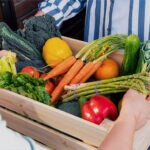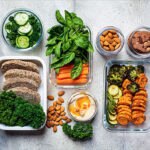Croquettes, arepas and tacu-tacu: tips for making the most of leftovers and cutting down on food waste
What if, instead of throwing them in the trash, we transform leftovers of meat, fish, vegetables, and many other foods into tasty bites? Croquettes, arepas, and tacu-tacu are the most well-known options, but there are other recipes that expand the flavors and textures in zero-waste cuisine.

Culinary expert Emilia Pardo Bazán begins her work, ‘La cocina española moderna,’ with the observation that, "Almost every time a cook is asked what type of filigree she knows how to make, she answers ‘croquettes.’" This opening introduces a deep dive into croquette recipes in her 1917 book. By that time, the croquette—a French creation—had already been adapted for over a century within Spanish cuisine, becoming an integral part of Spanish culinary tradition.
Amid hints, tips and lists of ingredients, the writer repeatedly mentions one of the key qualities of croquettes: they let you repurpose leftover meat, fish, vegetables, and various other foods. They exemplify a practical cuisine approach focused on using leftovers to prevent food waste.

Recipes that use leftovers have been essential throughout history and are ingrained in the culinary traditions of countries worldwide. Some of the most delicious and iconic dishes are based on zero-waste cooking: croquettes in Spain, arepas in Venezuela, calentado paisa in Colombia, and tacu-tacu in Peru.
Today, these traditional recipes and the practice of repurposing leftovers are seen as solutions to a problem that was not a major concern in 1917: food waste. Globally, one third of the food produced is not consumed, and 17 percent of all food available to consumers is wasted. Reviving traditional recipes and making the most of leftovers is an excellent way for individuals to help reduce food waste.
The importance of using leftovers
"Making the most of leftovers encourages culinary creativity and innovation, inspiring experimentation and the development of new recipes and cooking techniques. It also supports more efficient food resource management and contributes to the circular economy," says Silvia Díaz Aparicio, director of the Gastronomic Area and Culinary Arts at the Barcelona Culinary Hub cooking school.
From an economic and social standpoint, utilizing leftovers lowers food costs for consumers and enables fair access to nutritious food. "Making the most of leftovers is crucial for food sustainability and also enhances gastronomic diversity and equitable food access," Diaz explains.
Using leftovers has traditionally been a common practice across many cultures. However, modern lifestyles have altered dynamics, customs, and eating habits. "The fast pace of life and the prevalence of processed foods have reduced the emphasis on home cooking, thus increasing food waste. Additionally, the industrialization of food production has resulted in more standardized portions and packaging, which can make it harder to utilize leftovers effectively," explains the gastronomy expert from the Barcelona Culinary Hub.
Several factors favor reviving recipes that make the most of leftovers and underscore the importance of cooking with them. First, the popularity of dishes like croquettes and arepas, which are staples in Spanish, Venezuelan, and Colombian cuisines. Second, the growing interest in sustainability and heightened environmental awareness. Increasingly, people recognize the implications of food waste and its social and environmental impact.
An example of this shift in mindset is evident at the Barcelona Culinary Hub. "In the academic gastronomy sector, when we discuss the importance of using leftovers, students and clients typically respond positively once they grasp the gastronomic, environmental, and economic benefits of this practice," says Díaz.
"Initially, there may be resistance or skepticism, particularly if individuals are unfamiliar with the concept or associate it with unappealing dishes. However, when explained that using leftovers can be an opportunity to foster culinary creativity, offer economic savings, and reduce food waste, they generally become interested and willing to explore new techniques and recipes," she adds.

The most practical foods in zero-waste cooking
Certain foods are notable for their versatility, offering a wide range of flavors and textures, and possess chemical and physical properties that make them ideal for culinary use. The Barcelona Culinary Hub highlights the following:
- Vegetables: "They are versatile and can be used in a wide array of dishes, including soups, stews, stir-fries, salads, and sauces. Additionally, many vegetables can be frozen or dehydrated to extend their shelf life," Diaz explains.
- Rice and pasta: Kitchen staples that can form the foundation for recipes such as salads, soups, side dishes, and main dishes, whether reheated or combined with other ingredients.
- Cooked meat: Tacos, arepas, empanadas, soups, salads, and scrambled eggs can be prepared using leftover cooked chicken, beef, or pork. Meat leftovers can also be shredded and frozen for future use.
- Bread: Certainly, one of the standout ingredients in a kitchen focused on minimizing waste. It can be used to make bread crumbs, croquettes, puddings, toast, croutons, gazpacho, or salmorejo. Like meat, it can also be frozen for future use.
- Ripe fruit: "Ripe fruit can be used in smoothies, compotes, jams, baked desserts, and salads. They can also be frozen for later use in smoothies and desserts," says the expert. Using fruits and vegetables is crucial, as they are the most wasted foods. In Spanish households, for instance, fruit accounts for 31 percent of the food that ends up in the bin.
Tips for making the most of leftovers
Croquettes are an excellent way to repurpose leftover meat, fish, and vegetables. These ingredients can also be used to prepare fillings for delicious arepas. A simple dish like a Spanish omelet can serve as an opportunity to innovate by incorporating leftover ham, chorizo, and other ingredients. "This allows for maintaining the essence of the original recipe while adding a creative and sophisticated touch."
The possibilities extend much further. For instance, you can make French toast or garlic soups with stale bread, Colombian calentado paisa to use leftover beans and rice from the previous night, or Peruvian tacu-tacu to create a delicious dish from the same ingredients and more. It's all about understanding the potential of each ingredient.

These are the top five tips from the director of the Gastronomic Area and Culinary Arts at the Barcelona Culinary Hub culinary school to get the most out of no-waste cuisine:
- Reuse food in new recipes creatively by employing culinary techniques like slow cooking (sous-vide) or sautéing to enhance their flavors.
- Properly store leftovers in airtight containers and label them with the date of preparation for improved organization.
- Freeze leftovers by dividing them into individual portions for easy and quick thawing.
- Experiment with different ingredients and seasonings to bring variety to recycled dishes.
- Make the most of cooking with leftovers to reduce food waste and promote a sense of community and solidarity with the people around you.
The half-full fridge
Another valuable tip is to seek inspiration from the best. BBVA and El Celler de Can Roca have developed "La nevera medio llena," an initiative aimed at promoting sustainable consumption practices and reducing food waste. In a series of videos, Jordi Roca and his nephews, Marc and Martí Roca, present different scenarios illustrating how to view the fridge as half full or half empty. In each episode, they demonstrate how to transform leftovers from the previous day into delicious dishes.
A situation of "we have almost half a chicken" is transformed into pan-cooked sandwiches, leftover chickpeas are turned into hummus, and the remnants of a Mexican fiesta become nacho pancakes. The message is clear: everything can be put to good use, and the results are always delicious.
Technology can be a valuable ally in making the most of food and creating new dishes. Ekilu is an app with a recipe search engine: by simply entering the ingredients you have, the tool will suggest one or more recipes you can cook with them. Other apps, like Best Before, help track expiration and best-before dates of food items in your fridge and pantry so that you can use them before they spoil.
In addition to being useful tools, these apps illustrate how reducing food waste is becoming a higher priority. "As consumers and food professionals increasingly recognize the economic, culinary, and environmental benefits of using leftovers, we are likely to see a resurgence of these practices," says Diaz. He adds that the development of new cooking techniques, creative recipes, and increased awareness can significantly contribute to a paradigm shift that helps reduce food waste.